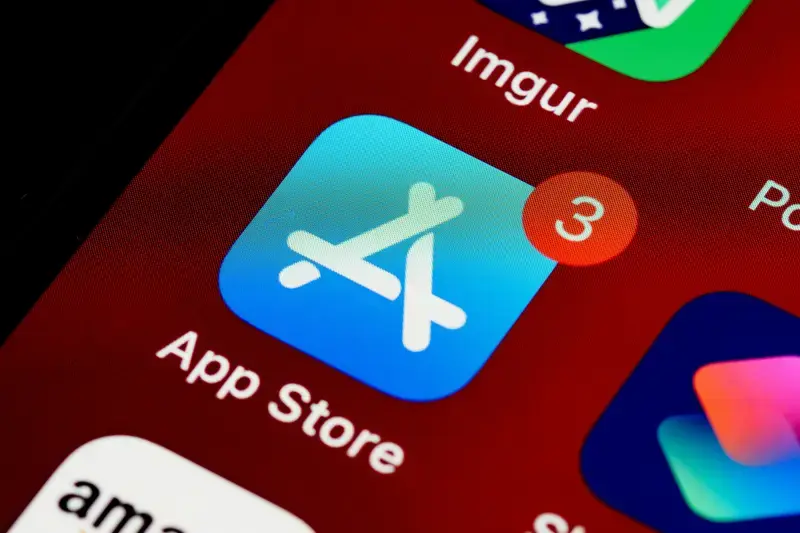How Do I Optimise My App for the Google Play Store?
Launching your app on the Google Play Store feels a bit like opening a shop in the world's biggest shopping centre. With over 3.5 million apps competing for attention, getting noticed can feel overwhelming. But don't worry - we've been helping developers navigate these waters since 2015, and we know exactly how challenging this journey can be.
Success in the Play Store isn't just about having a great app - it's about making sure the right people can find it at the right time
Think about the last time you searched for an app. Perhaps you were looking for a meditation app to help you relax, or a workout tracker to support your fitness goals. How did you choose which one to download? Chances are, you were influenced by the app's title, its description, those eye-catching screenshots, or maybe some glowing reviews.
That's exactly what App Store Optimisation (ASO) is all about - making your app more visible and appealing to potential users. It's like SEO for apps, but with its own unique set of rules and best practices.
In this comprehensive guide, we'll walk you through every aspect of optimising your app for the Google Play Store. From crafting the perfect app description to choosing keywords that actually work, we'll share practical, actionable tips based on our experience of launching hundreds of successful apps.
Whether you're preparing to launch your first app or looking to boost the performance of an existing one, this guide will help you navigate the process with confidence. Let's begin this journey together, shall we?
Understanding Google Play Store Basics
Before diving into the nitty-gritty of app store optimisation, let's get comfortable with how the Google Play Store actually works. Think of it as getting to know the rules of the game before playing – and trust us, we've seen many developers skip this crucial step in their excitement to launch.
How the Play Store Functions
The Google Play Store is like a massive digital shopping centre where millions of apps compete for attention. Just as you might struggle to find a specific shop in a huge mall without proper signage, your app needs the right signals to be discovered. Google's algorithm works rather like a helpful shopping centre guide, directing users to the most relevant apps based on various factors.
Key Ranking Factors
Through our years of experience, we've observed that Google primarily looks at three core elements: relevance (how well your app matches what users are searching for), quality (your app's performance and user satisfaction), and engagement (how users interact with your app). It's quite similar to how a good café succeeds – you need the right location (visibility), quality food (your app's performance), and happy customers (positive reviews).
One interesting fact that often surprises developers is that the Play Store algorithm considers different factors than Apple's App Store. While both aim to surface the best apps, Google puts more emphasis on your app's technical performance and crash reports. Remember when Flappy Bird topped the charts despite its simple design? That's because it nailed these basics – it was lightweight, crash-free, and highly engaging.
Understanding these fundamentals will make optimising your app much more straightforward as we progress through this guide.
Crafting the Perfect App Title and Description
Your app's title and description are like your shop window on the Google Play Store. They're often the first things potential users see, and just like that moment when you're walking past a lovely café in London, you want to make a brilliant first impression.
Getting Your Title Right
Think of your app title as a tiny billboard. You've got a maximum of 50 characters to play with, so every letter counts! We've found that the most effective titles follow a simple formula: your brand name + keywords that describe your app's main function. For instance, if you've created a meditation app called "Peaceful", you might want to go with "Peaceful: Meditation & Sleep Stories".
The description is where you get to tell your app's story in detail. You have 4,000 characters to work with, but remember - the first 80-100 characters are crucial as they appear in the preview before users tap 'read more'.
- Start with a compelling first sentence that captures your app's main benefit
- Break up text into short, scannable paragraphs
- Include your most important features in bullet points
- End with a clear call-to-action
- Incorporate relevant keywords naturally
Always A/B test different descriptions to see which resonates best with your audience. You might be surprised - sometimes the version you think is perfect isn't the one that converts best!
Remember to avoid keyword stuffing - Google's algorithms are clever enough to spot this, and more importantly, real users find it off-putting. Instead, focus on writing naturally and clearly, as if you're explaining your app to a friend over coffee.
Choosing Keywords That Work
Remember the last time you tried finding something specific on your phone? You probably typed a few words into the search bar, hoping to find exactly what you needed. That's exactly how most people look for apps, which is why choosing the right keywords is crucial for your app's visibility.
Understanding Keyword Research
Think of keywords as signposts that guide users to your app. Through our years of experience at Glance, we've found that the best approach is to start by making a list of terms that genuinely describe what your app does. If you've created a meditation app, for instance, you might begin with words like 'mindfulness', 'relaxation', and 'stress relief'.
Finding the Sweet Spot
Here's a helpful tip: look for keywords that have a good balance of search volume and competition. Popular tools like Google's Keyword Planner or App Annie can help you find this sweet spot. It's like choosing where to open a shop - you want a location with enough foot traffic but not so crowded that you'll be lost in the crowd.
Remember to think about how people actually search. They often use natural language and questions. For example, instead of just 'meditation app', they might search for 'how to meditate' or 'sleep better app'. Including these longer, more specific phrases (known as long-tail keywords) can help your app reach the right audience.
Most importantly, be honest with your keyword choices. Using irrelevant keywords might get you more views initially, but it will lead to poor user engagement and potentially negative reviews - something we've seen happen all too often.
Making Your App Screenshots Stand Out
Let's face it - in today's fast-paced world, you've got about three seconds to grab someone's attention in the Google Play Store. Your screenshots are often the make-or-break factor in whether someone downloads your app or keeps scrolling. Think of them as your app's shop window display.
The Art of Visual Storytelling
Your screenshots should tell a compelling story about your app's journey. Start with your app's most impressive feature in the first screenshot - just like how Netflix always shows its biggest new releases first. Each subsequent image should flow naturally, guiding potential users through your app's key benefits and features.
Screenshots don't just show what your app does - they show how it makes people's lives better
Design Best Practices
Keep your screenshots clean and uncluttered - imagine explaining your app to your grandmother. Use clear, readable text overlays to highlight key features, but don't overwhelm the image. We've found that using no more than 5-7 words per screenshot works best. Remember to use high-quality images that look sharp on all devices, particularly on tablets where screenshots appear larger.
Don't forget to test different orientations - portrait usually works better for most apps, but games and video apps might benefit from landscape screenshots. Also, consider adding device frames to your screenshots; they can help users better visualise how your app will look on their own devices. Just as you wouldn't wear your wedding outfit to a beach party, make sure your screenshots match your app's personality and target audience.
Getting Your App Icon Right
Think of your app icon as your digital shop front - it's often the first thing potential users see when browsing the Google Play Store. Just like you might judge a book by its cover (we all do it sometimes!), users make split-second decisions about apps based on their icons.
Essential Elements of a Successful App Icon
Your app icon needs to be simple yet memorable. Imagine trying to spot it on a crowded phone screen whilst rushing to catch the bus - it should be instantly recognisable. We've found that the most effective icons typically use no more than two or three colours and feature a single, clear focal point.
Technical Requirements and Best Practices
The Google Play Store requires your icon to be 512px x 512px, but don't let that large size fool you - your icon needs to look good when it's tiny too. Remember how small icons appear on your phone's home screen! We recommend testing your icon at various sizes, from 96px all the way down to 48px.
When designing your icon, avoid using text (it becomes unreadable at small sizes) and steer clear of busy photographs or complex gradients. Instead, opt for bold, distinctive shapes and ensure there's enough contrast to make your icon pop against both light and dark backgrounds. Think of popular apps like WhatsApp or Instagram - their icons are instantly recognisable because they follow these principles.
Remember to check how your icon looks alongside your competitors'. If everyone in your category uses blue, perhaps consider a different colour to stand out. Just ensure your choice still feels appropriate for your app's purpose - a meditation app probably shouldn't use alarming red tones!
Building Your App Rating and Reviews
Let's face it - we all look at ratings and reviews before downloading an app. They're like digital word-of-mouth recommendations, and they can make or break your app's success on the Google Play Store.
After eight years of helping apps succeed, we've learned that genuine, positive reviews don't just happen by chance. They're the result of creating an app that users genuinely love and making it easy for satisfied users to share their experiences.
Encouraging Genuine Reviews
Think about when you last left a review. Was it when an app pestered you repeatedly, or when you had a genuinely good experience? The key is timing - asking for reviews when users are most likely to be happy with your app, like after completing a task successfully or reaching a milestone.
- Ask for reviews after positive interactions
- Make the review process simple and unobtrusive
- Respond to both positive and negative reviews promptly
- Use negative feedback to improve your app
- Never buy fake reviews - users can spot them a mile away!
Managing Negative Feedback
Nobody likes getting negative reviews, but they're actually golden opportunities for improvement. Responding professionally to criticism shows potential users that you care about their experience and are actively maintaining your app.
When responding to reviews, always thank the user for their feedback first, then address their specific concerns. It's like having a conversation in a coffee shop - keep it friendly and solution-focused!
Localising Your App for Different Markets
When you're developing an app, it's easy to focus solely on your home market. But here's the thing: the world is a wonderfully diverse place, and your app could be missing out on massive opportunities if you're not thinking globally.
Why Localisation Matters
Think about this: would you feel comfortable using an app that's not in your native language? Probably not. That's exactly how users in other countries feel. Localisation isn't just about translating words; it's about making your app feel like it was made specifically for each market you're targeting.
Getting Localisation Right
Start by identifying your target markets through Google Play Console analytics. Look for countries showing interest in your app, even without localisation. Remember when Pokémon GO launched? They rolled out gradually, country by country, perfecting their localisation strategy as they went.
Beyond language translation, consider cultural nuances. Colours, symbols, and even gestures can mean different things in different cultures. For instance, while a thumbs-up might be positive in the UK, it's considered offensive in some Middle Eastern countries.
When localising your app listing, pay attention to:
• App title and description in local languages • Screenshots with local language and cultural references • Pricing adjusted for local markets • Date formats and currencies • Local regulations and age ratings
Remember, good localisation takes time and investment, but it's worth it. We've seen apps increase their download rates by up to 300% in new markets simply by implementing thoughtful localisation strategies. Start with one or two key markets, do them well, and expand from there.
Keeping Your App Fresh with Regular Updates
Just like your favourite local café needs to keep its menu exciting and relevant, your app requires regular updates to stay competitive in the Google Play Store. With over eight years of helping apps succeed, we've seen how crucial consistent updates are for maintaining user interest and algorithmic favour.
Why Updates Matter
Think about how frustrating it is when an app you love becomes stale or stops working properly. Regular updates show your users that you're actively maintaining and improving their experience. More importantly, Google's algorithm notices this commitment to quality, often rewarding frequently updated apps with better visibility.
An app without updates is like a garden without water - it may look fine for a while, but eventually, it will wither away and lose its appeal
Creating an Update Strategy
We recommend establishing a consistent update schedule, ideally every 4-6 weeks. Your updates should include a mix of bug fixes, performance improvements, and new features. Remember to clearly communicate these changes in your release notes - users appreciate knowing what's new, and Google's algorithms favour detailed update descriptions.
When planning updates, consider user feedback from reviews and support tickets. If multiple users mention the same issue or request, prioritise addressing it. This approach not only improves your app but also shows users that you're listening to their needs. Just remember to maintain a balance - too many updates can be as problematic as too few, potentially frustrating users with constant changes.
Understanding App Store Analytics
Think of App Store Analytics as your app's health report - it tells you exactly how well your app is performing and where there might be room for improvement. After working with hundreds of app developers over the years, we've seen how proper analytics understanding can make the difference between an app that thrives and one that struggles to find its audience.
Key Metrics to Monitor
The Google Play Console offers a wealth of data that can feel overwhelming at first - rather like trying to decode the Matrix! But don't worry, we'll break down the most important metrics you should focus on.
- Installation metrics: Number of installs, uninstalls, and retention rates
- Acquisition metrics: Where your users are coming from and conversion rates
- User engagement: Average session length and daily active users
- Technical performance: Crash reports and ANR (Application Not Responding) rates
- Revenue metrics: Sales data and in-app purchase patterns
Making Data-Driven Decisions
Just like checking your car's dashboard while driving, regular monitoring of these metrics helps you make informed decisions about your app's future. For instance, if you notice users from Spain have higher engagement rates, you might want to prioritise Spanish localisation. Or if you spot that most uninstalls happen after a particular screen, that's your cue to investigate and improve that section.
Remember, numbers tell stories - they're not just cold statistics. Each metric represents real people using your app, and understanding these patterns helps you serve them better. We recommend setting aside time each week to review your analytics and track progress against your goals.
Conclusion
Optimising your app for the Google Play Store might feel like a complex puzzle at first, but it's really about understanding and implementing each piece systematically. We know from working with hundreds of app developers that the journey can seem overwhelming - you're not alone in feeling that way.
Remember that ASO isn't a one-time task you can tick off your list and forget about. It's an ongoing process that requires regular attention, much like tending to a garden. Your app's visibility and success in the Play Store depend on how well you maintain and adjust your optimisation strategy over time.
From crafting the perfect app title to maintaining a healthy rating, each element we've discussed plays a crucial role in your app's discovery and download rates. Think of these elements as individual instruments in an orchestra - they need to work in harmony to create the perfect performance.
As you implement these optimisation techniques, keep in mind that patience is key. Results won't appear overnight, but with consistent effort and attention to detail, you'll start seeing improvements in your app's visibility and download numbers. Keep testing different approaches, stay current with Play Store guidelines, and always prioritise your users' experience.
The mobile app marketplace continues to grow more competitive each year, but with these optimisation strategies in your toolkit, you're well-equipped to help your app stand out. Remember, even small improvements can lead to significant results over time. Stay committed to the process, and don't hesitate to revisit different aspects of your ASO strategy as you learn what works best for your specific app.
Share this
Subscribe To Our Learning Centre
You May Also Like
These Related Guides

How Do I Optimise My App for the Apple App Store?

Which App Store Ranking Factors Actually Move the Needle?



